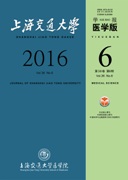Objective To investigate the correlation between body composition and renal damage indexes in patients with type 2 diabetes mellitus. Methods One hundred patients with type 2 diabetes mellitus were randomly enrolled, including 45 male ones and 55 female ones. The body composition related parameters (including body fat percent, body muscle percent, and body water percent, etc.) were measured with a body composition analyzer and renal damage related parameters (including serum urea nitrogen, uric acid, creatinine, estimated glomerular filtration rate, 24 hours urine protein, microalbumiuria, urinary beta2 microglobulin, N-acetyl-beta-D-glucosaminidase, and transferrin, etc.) were detected. The correlation between body composition and renal damage indexes was analyzed. Results For male patients, the serum uric acid level was positively correlated to the body fat percent and negatively correlated to the body muscle percent, and the 24 hours urine protein was negatively correlated to the extracellular water percent. For female patients, the serum uric acid was positively correlated to the body fat percent and negatively correlated to the body muscle percent and the extracellular water percent, and 24 hours urine protein was positively correlated to the body fat percent and negatively correlated to the body muscle percent and extracellular water percent. Conclusion Body fat percent, body muscle percent, and body water percent may be important factors influencing uric acid and proteinuria, which are associated with renal damage in patients with type 2 diabetes mellitus.

